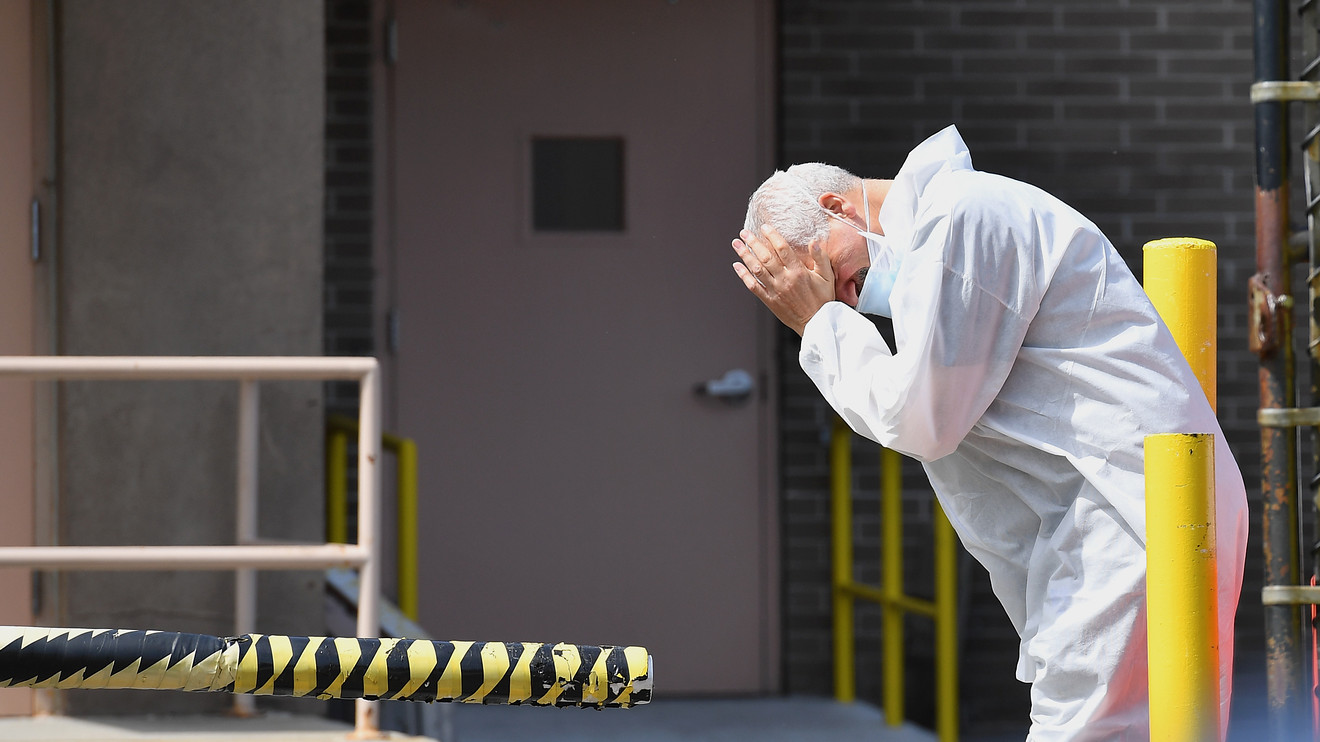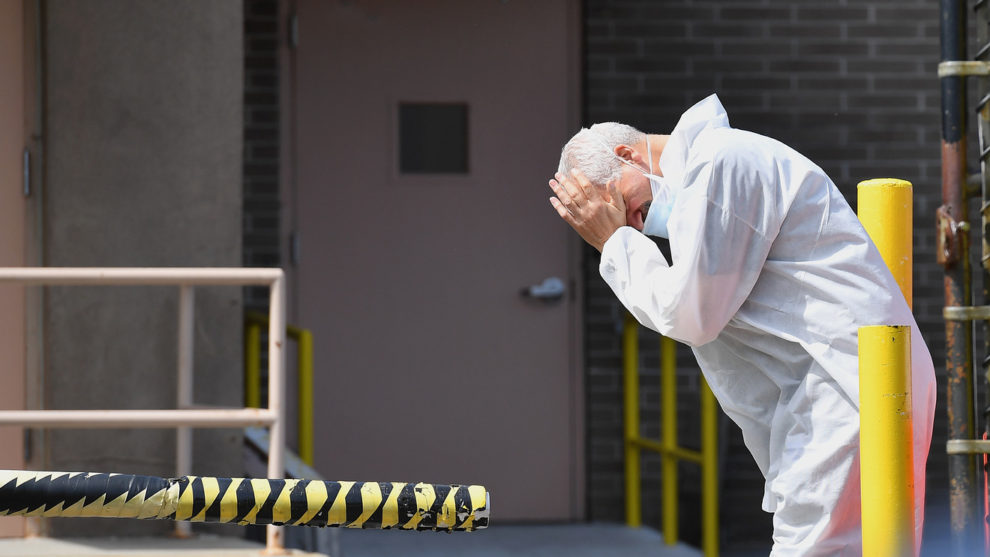
As the COVID-19 pandemic claims lives and devastates local economies, America’s health care providers are the most public face of the crisis, but the business behind the care is just as stressed as the hospital wards are, making it one of the sore spots of municipal finance.
The pandemic presents a double whammy for the $145-billion hospital sector backed by tax-exempt bonds. Facilities face higher costs as patients flood in needing critical care, and lower revenue as hospitals must cut back on procedures that bring in better returns, like elective procedures.
The public hospital sector has long been one of the trickiest segments of municipal finance. It’s a patchwork system of cobbled-together revenues that must continually remake itself in response to shifting, and conflicting, American policy priorities.
“This episode should be a sanity check,” said Eric Kazatsky, head of municipal strategy for Bloomberg Intelligence. “We should have a serious conversation about what’s needed to actually provide health care in this country and stop MacGyvering together a system.”
Postponed elective services will reduce not-for-profit hospital revenue by about 25%-40% per month, according to a recent research analysis by Moody’s Investors Service, which has a negative outlook on the sector. Moody’s calls the CARES Act, the federal stimulus legislation passed in late March, a modest positive.
“While the extraordinary level of federal aid offers the sector some relief, however, it is unlikely to fully cover the material revenue decline facing hospitals as a result of the pandemic, and cash flow will likely be materially lower for some months,” the agency said in a note.
The CARES Act sets aside $100 billion for hospitals to cover lost revenue, prepare for coronavirus treatment, and provide an advance on some expected Medicare reimbursements. But Moody’s cites data from the Centers for Medicare and Medicaid Services that estimates national hospital services spending at $100 billion every month, and notes that the pandemic is almost certain to last longer than that.
Moody’s and Kazatsky both believe that large, well-diversified hospital systems, which may often have a dominant position in a regional area, will withstand the downturn better than smaller, single-site providers — even if right now the bigger players in more urban areas are taking the most heat.
Big players like Bon Secours Mercy Health, a seven-state system with $10 billion in annual revenue on the East Coast and Mid-Atlantic, have operating margins of about 10%, Kazatsky said. In fact, Moody’s just upgraded Bon Secours, saying “The system’s ample liquidity of over $5 billion and likely benefits of additional funding via the CARES Act should allow it to manage the impact of COVID-19, along with other factors.”
After a few roller-coaster weeks in March, the municipal bond market is gradually getting back to business. Bon Secours plans to sell $380,540,000 of bonds in the coming weeks, according to a filing dated April 2. But Kazatsky points out a new phenomenon in the filings of some bond issuers: COVID-19 is noted as a risk factor.
In a special supplement to an April 6 bond offering, UC Health, a Cincinnati-area hospital system, wrote that it estimates a $25 million hit to revenue in the first quarter of 2020 compared to the same period in 2019 as a result of COVID-19, the impact of which was only truly felt during the last few weeks of the quarter.
UC Health plans to replace its current $25 million line of credit with a $100 million credit line. The City of Saginaw Hospital Finance Authority, also according to an official statement, decided to take out a $50 million line of credit “in order to increase its liquidity during the COVID-19 pandemic.”
Read: As the Fed steps into the municipal bond market, will it be enough?
While hospital bonds are trading at levels that show slightly more stress than pre-pandemic February, they’re no more distressed than any other municipal revenue bonds, Bloomberg data show. And hospitals may have options, like merging or consolidating with others, that other municipal entities may not be able to tap, Kazatsky pointed out.
As sources told MarketWatch late last month, unprecedented events can lead to unforeseen market conditions.
For now, some fund managers are cautious. Bill Bonawitz, director of municipal research at PNC Capital Advisors, which has $8 billion in municipal assets under management, called the muni market — and perhaps the world — “upside down.”
He and other analysts wonder just what kind of “normal” America will return to. Will people be reluctant to crowd back into hospitals for procedures they’ve put off during the crisis? How many will lose their health insurance along with their jobs? Will it ever be possible to have, as Kazatsky suggested, a serious conversation about what kind of health care system we want in America?
For all the shock of the 2008 financial crisis, Bonawitz said, there was a moment when investors realized it was possible to be opportunistic again. “We’re being a lot more measured now,” he said.
“We’re trying to think about how things will look in the future. The financial crisis was real and had an impact, but I don’t think it changed all of society. This pandemic could change, at least for a time, a lot of the ways we do things.”











Add Comment